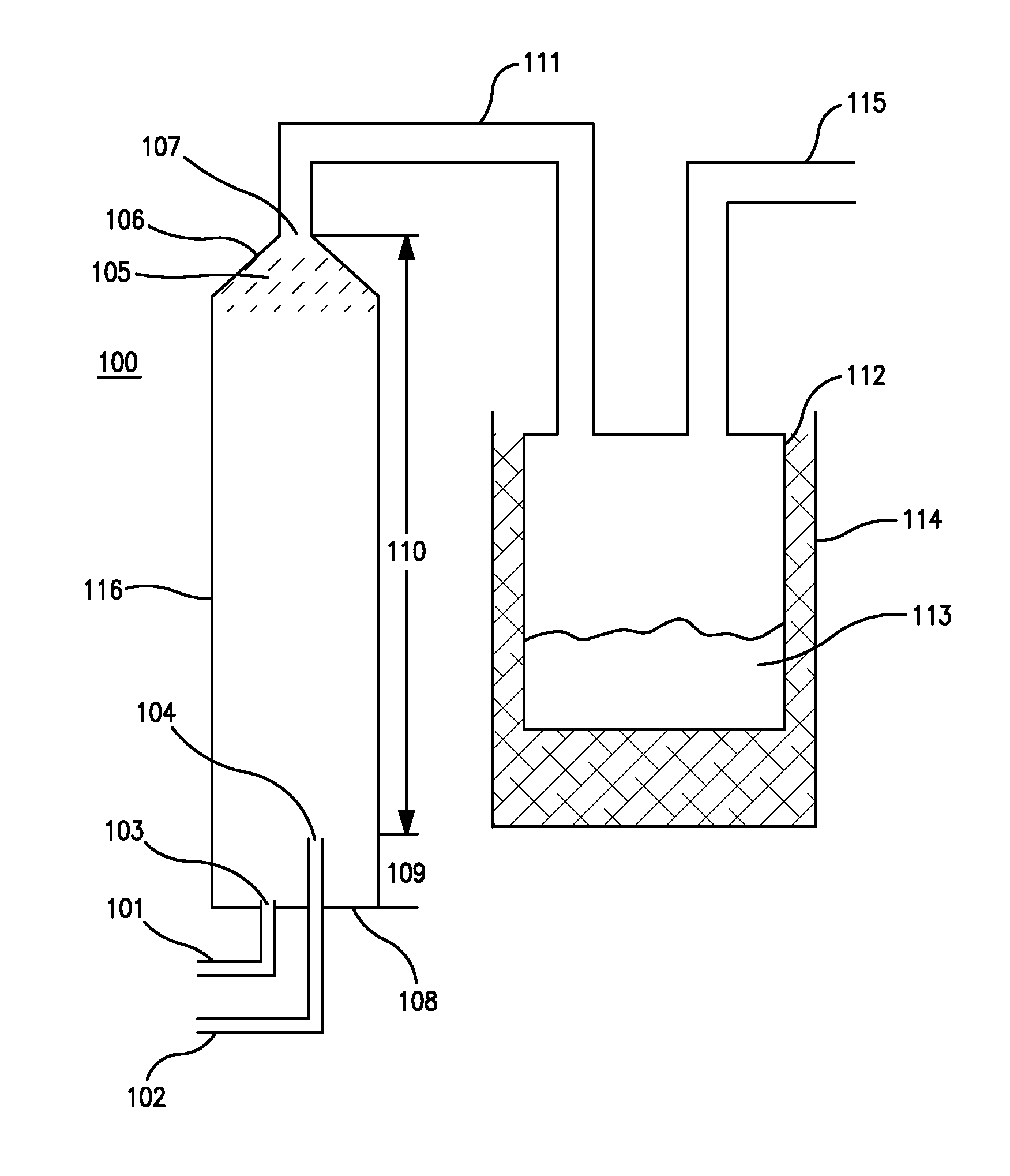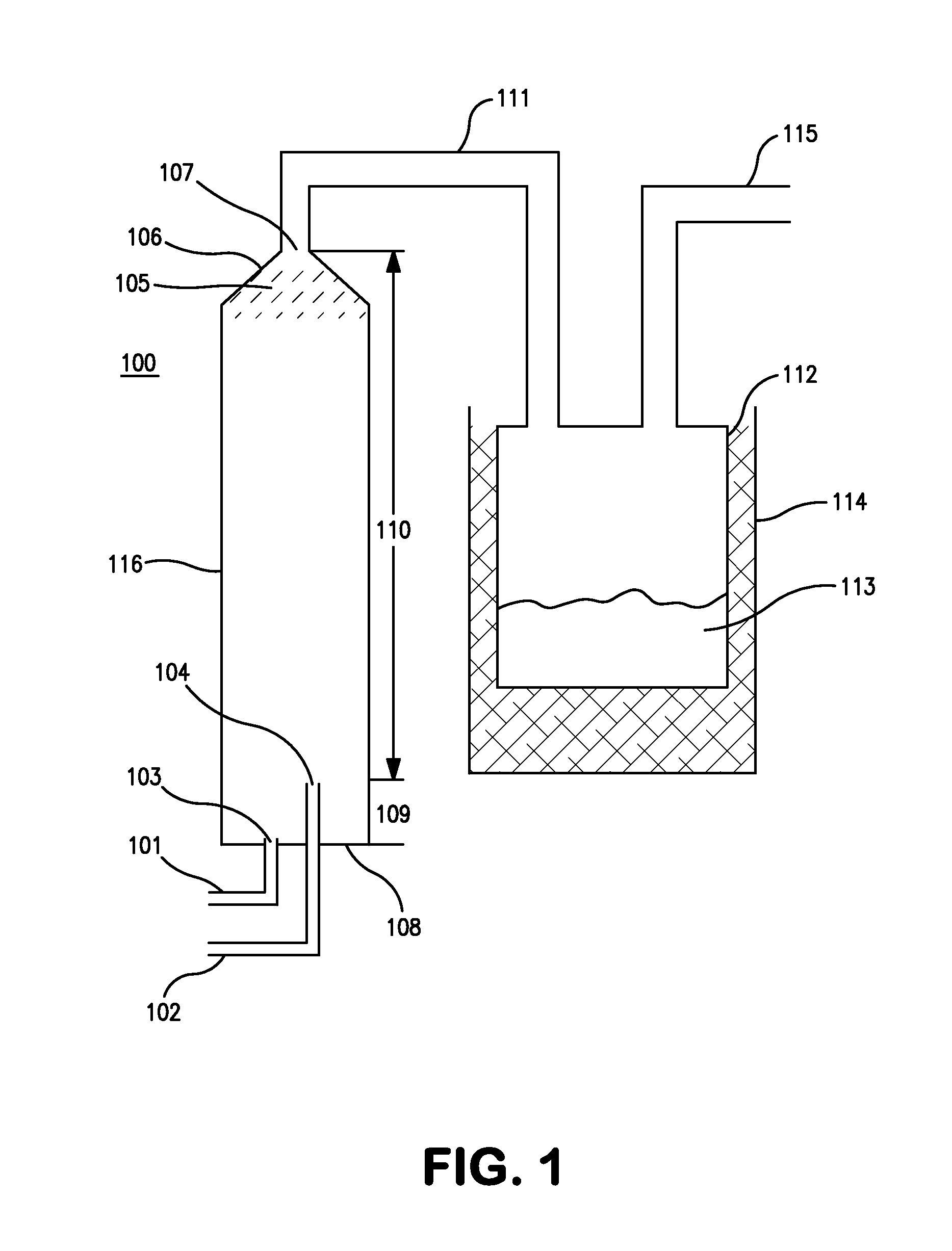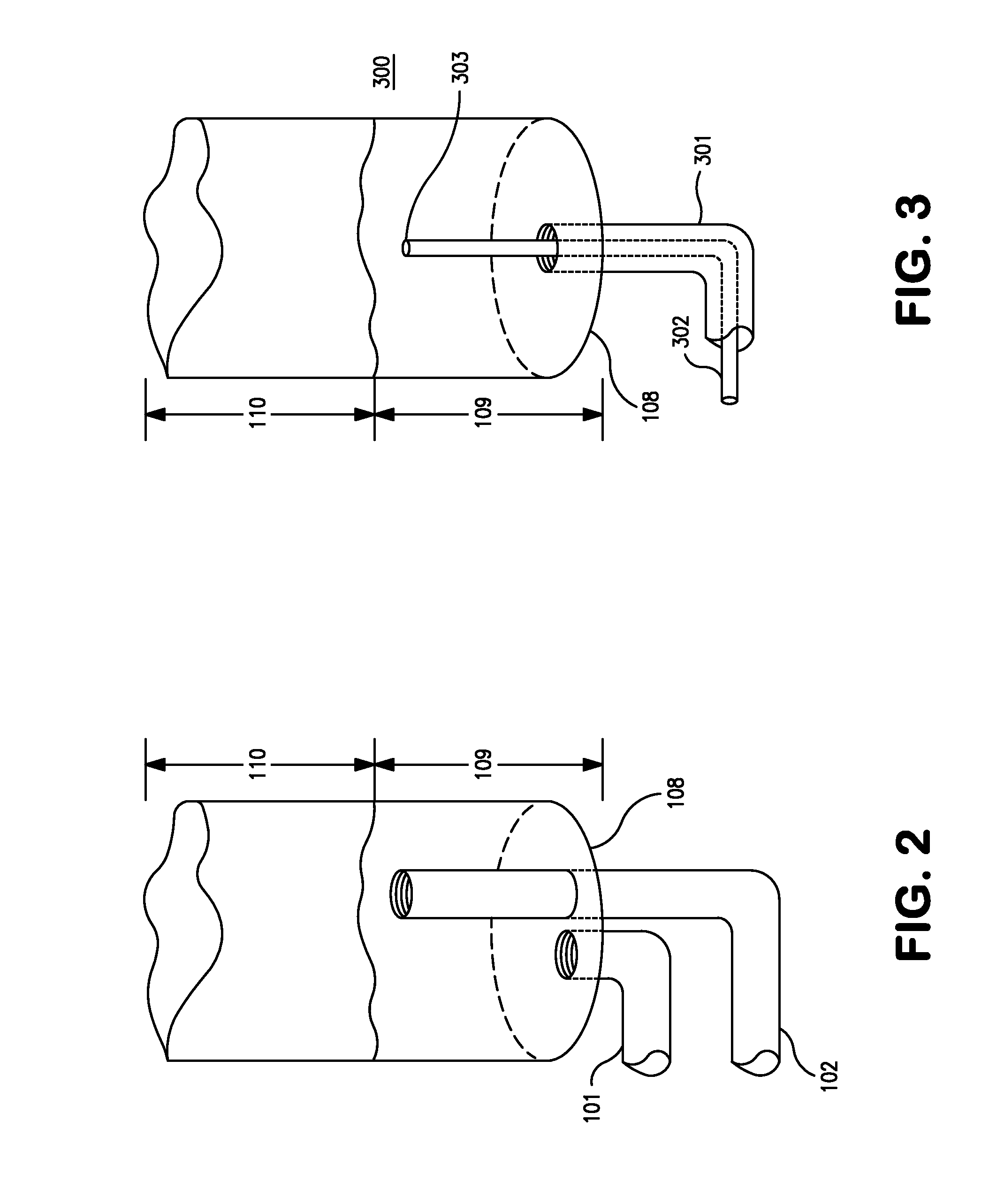Apparatus and method for the production of trisilylamine
a technology of trisilylamine and apparatus, which is applied in the field of disilylamine and trisilylamine, can solve the problems of limited batch size, large volume of vessels, and easy decomposition, and achieve high volume and high efficiency synthesis of silylamines. , the effect of high volum
- Summary
- Abstract
- Description
- Claims
- Application Information
AI Technical Summary
Benefits of technology
Problems solved by technology
Method used
Image
Examples
example 1
[0047]23 gm of Ammonia and 87 gm of monochlorosilane (MCS) are metered into a vertical tubular reactor from the bottom. The gases were fed through different lines and through different nozzles, as illustrated in FIGS. 1 and 7, to avoid premature reaction in the delivery lines. Ammonia was fed into the reactor at a rate of 0.38 gm / min. Monochlorosilane was fed into the reactor at a rate of 1.45 gm / min. This is an excess of about 29 mole % of MCS. The total run time was 60 minutes. The pressure in the reactor was maintained at about 100 to about 200 torr. The gases react to form disilylamine, trisilylamine and ammonium chloride. The reaction is exothermic and hence the walls of the reactor became warm as the process progressed. The gaseous reaction products exited through the top of the reactor to a collection vessel. The collection vessel is kept in a cold bath—dry ice / isopropyl alcohol (IPA) which creates a temperature of about −78° C. Disilylamine, trisilylamine are collected in th...
example 2
[0056]139 gm of Ammonia and 450 gm of monochlorosilane (MCS) are metered into a vertical tubular reactor from the bottom. The gases were fed through different lines and through different nozzles, as illustrated in FIGS. 1 and 7, to avoid premature reaction in the delivery lines. Ammonia was fed into the reactor at a rate of 0.93 gm / min. Monochlorosilane was fed into the reactor at a rate of 3.0 gm / min. This is an excess of about 10.6 mole % of MCS. The total run time was 150 minutes. The pressure in the reactor was maintained at about 100 to about 200 torr. The gases react to form disilylamine, trisilylamine and ammonium chloride. The reaction is exothermic and hence the walls of the reactor became warm as the process progressed. The gaseous reaction products exited through the top of the reactor to a collection vessel. The collection vessel is kept in a cold bath—dry ice / isopropyl alcohol (IPA) which creates a temperature of about −78° C. Disilylamine, trisilylamine are collected i...
example 3
[0057]353 gm of Ammonia and 1063 gm of monochlorosilane (MCS) are metered into a vertical tubular reactor from the bottom. The gases were fed through different lines and through different nozzles, as illustrated in FIGS. 1 and 7, to avoid premature reaction in the delivery lines. Ammonia was fed into the reactor at a rate of 1.47 gm / min. Monochlorosilane was fed into the reactor at a rate of 4.43 gm / min. This is an excess of about 2.6 mole % of MCS. The total run time was 240 minutes. The pressure in the reactor was maintained at about 100 to about 200 torr. The gases react to form disilylamine, trisilylamine and ammonium chloride. The reaction is exothermic and hence the walls of the reactor became warm as the process progressed. The gaseous reaction products exited through the top of the reactor to a collection vessel. The collection vessel is kept in a cold bath—dry ice / isopropyl alcohol (IPA) which creates a temperature of about −78° C. Disilylamine, trisilylamine are collected ...
PUM
 Login to View More
Login to View More Abstract
Description
Claims
Application Information
 Login to View More
Login to View More - R&D
- Intellectual Property
- Life Sciences
- Materials
- Tech Scout
- Unparalleled Data Quality
- Higher Quality Content
- 60% Fewer Hallucinations
Browse by: Latest US Patents, China's latest patents, Technical Efficacy Thesaurus, Application Domain, Technology Topic, Popular Technical Reports.
© 2025 PatSnap. All rights reserved.Legal|Privacy policy|Modern Slavery Act Transparency Statement|Sitemap|About US| Contact US: help@patsnap.com



